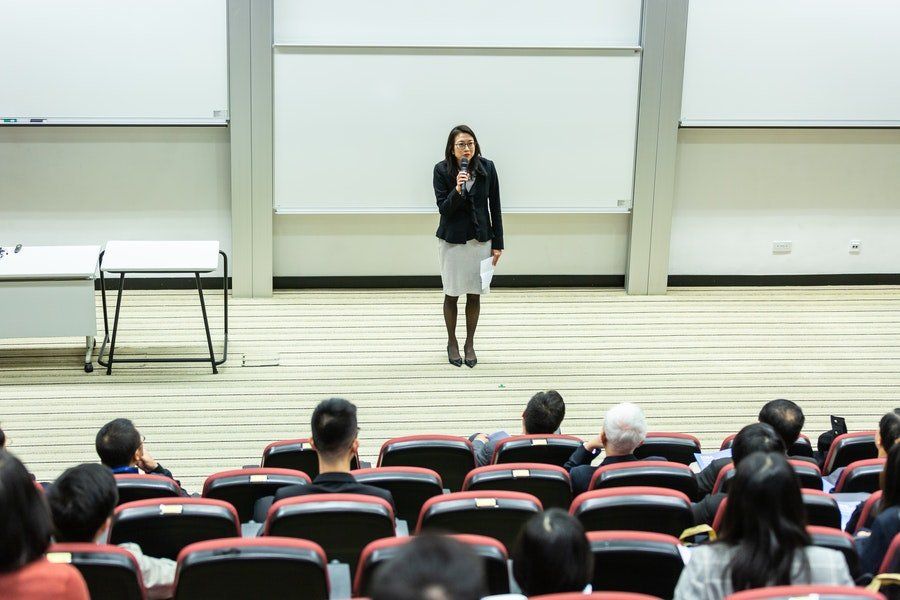Journey to Diversity, Equity and Inclusion Success - Can It Be Done in Malaysia?

Image is from freepik.com by @freepik
The age old saying goes, "it is not about the destination, but the journey". It cannot be more true for those attempting to institutionalise Diversity, Equity, and Inclusion (DEI) into their organisation.
I recently wrote about whether or not DEI can be successful in Malaysia; however, I’d like to add that success in DEI is subjective. Just like how there is no 'one-size fits all' solution, there is also not one clear picture of what a successful DEI-enabled organisation looks like. This makes it hard on a macro level to map out what success is, especially if we do not know what the final picture looks like. So, for those who are starting out on their journey and planning a roadmap - where is that road leading to? Not Rome, for sure.
I'd like to propose that we do not define success as a final point but more as an ability to sustain. For those who have set a target goal of % of women at leadership levels, can there be an assurance that this number maintains beyond the expected timeline? This perspective emphasises that DEI success lies in maintaining progress rather than merely reaching numerical targets.
One of the greatest perks about my role at LeadWomen is that I have the opportunity to speak to many leaders in different industries. I’ve seen organisations that are either just starting out, have done many great initiatives in pockets and are already progressing towards a DEI-enabled organisation.
How do they do it? You ask me and here are some of my consolidated observations, a culmination of hundreds of meetings, discussions and engagements.
1. A DEI committee/council - needed or not needed?
We Malaysians do have an obsession with setting up task forces and committees, usually becoming an added responsibility (at no increment of pay) which then becomes second priority over 'business needs'. This easily leads to burnout where BAUs takeover and this committee then becomes an ‘event planning committee’ - organising one-off engagements during key days (International Women’s Day, festival / cultural days). While these celebrations are needed to keep raising awareness, we also cannot expect structural and key changes to come out of this approach.
Having said that, I’ve seen for these ‘extra-curricular’ committees, when the prerogative that a senior leader is needed as a champion or sponsor, regardless of gender, I’ve seen initiatives sustain and changes to policies actually happen, beyond the celebratory events.
The best case examples are when the committees are not established in a vacuum. It is established because a) it was a senior management decision; b) part of a new cultural transformation journey; c) there is a business strategic need to execute on the organisations’ DEI goals. Eventually, there can be a possibility that the council is no longer needed as the DEI goals are now embedded into leadership KPI at all levels and it is part of the employee’s code of conduct (more on this in the next part!)
This is where defining the roles and responsibilities of this committee becomes crucial. Here are some starting questions you can reflect on:
- What are the key areas of concern to focus on, e.g. recruitment, promotion, people-related policies etc?
- Who in senior management should be involved, e.g. CEO, Chief People Officer, business leads?
- What is the process to make changes, i.e.raising awareness, policy and process review?
An example:
An oil & gas company set up a Diversity and Inclusion Council with a key focus on removing bias when discussing promotions in their talent councils. They have been given the mandate from leadership to run an unconscious bias training from the most senior management down to middle managers to raise awareness on the importance of calling out bias during decision making and collectively identifying solutions (e.g. setting up ground rules before the discussion, a ‘bias police’). At the end of the two years of awareness raising, they have executed on plans to hire and promote more diverse talents, now focusing on neurodiverse talents at all levels.
2. Purpose-driven approach
Understanding your "why" provides clarity and direction. How often do we reflect on the importance of fostering an inclusive culture? Is it merely an expectation or compliance requirement, or is there a deeper need to ensure the organisation stays resilient? Or is it part of your organisation’s core values, if so, how are these values embraced and embodied by every single employee?
A purpose-driven approach can help to empower individuals at all levels as it creates the ‘buy-in’. Take KPMG’s 10000 stories initiative where they had every team see the big picture of what they do, which then significantly increased engagement and morale at the firm.
In Malaysia, this can also be done - what is your organisation and teams’ purpose today? In social psychology, we call this creating a superordinate identity where regardless of the individual differences, everyone understands what it means to be associated with one group, i.e. the organisation. This can then encourage and foster collaboration to achieve the common goal of the group, i.e. your organisation’s mission. This is essentially taking all the fancy words on your website (purpose,values, mission and vision) and living it. This is also one way to create a DEI-enabled organisation, with or without a committee.
Examples:
An F&B organisation realised a need to define what DEI means to their business and their employees. Their talent acquisition and talent development team then proceeded to conduct focus groups with all employees (full time and contract) to discuss the importance of a safe and inclusive workplace. From there, they found their ‘why’ and executed their DEI strategy that is focused on more inclusive and diverse hiring: raising awareness on unconscious bias and how to have objective discussions. A great outcome of this was that we were told that this led to a hiring manager challenging 'tradition' in hiring a pregnant woman in her final trimester for a client-facing sales role instead of someone else because the long-term potential outweighs her temporary leave from work. Despite the initial criticism from others, with the support of the human resources team and reminder of their DEI strategy, she ended up becoming one of the top performers. This example changed mindsets within the organisation with HR and hiring managers now working closely to ensure the hiring process is focused on long-term talent hiring.
A multinational financial institution realised that there is a strong attrition rate with the women at a certain level (middle management) despite all the resources and initiatives in place. They then conducted an in-depth diagnostic review of all their data (promotion, tenure, attrition) and conducted focused interviews with the line managers, current employees at this level. During the analysis period, it was identified that it was on the end-to-end management of maternity leave. This then became their ‘why’ to focus on and worked towards creating a more supportive environment and process for their women going on and coming back from maternity leave. [Disclaimer: We have not engaged this company since the diagnostic so we are unable to share the end results of their initiatives]
Read more: Redefining Diversity, Equity and Inclusion in Malaysia: A Shifting Landscape
3. Finding your community
A supportive network of DEI practitioners is important, especially as we look at success as an ongoing journey. Regularly engaging with individuals and companies who are on this DEI journey, regardless of maturity levels can provide DEI practitioners with a sense of community. Regular discussions around key areas under DEI can provide different perspectives, provide some best practices and also opportunities for collaboration.
At LeadWomen, we created our Equality at Work corporate community to provide organisations who are serious about DEI with that platform and connection. Our quarterly roundtable is centered around areas like disability inclusion, ageing society and hiring of senior workers as well as workplace harassment and safety. We often invite key partners and subject matter experts in their respective fields to share what can be done in the private sector to overcome challenges and concerns on these topics. What we have seen over the past year and a half is that our corporate community members are more open to explore partnership opportunities with each other as well as with our invited partners.
A great story that I’d like to share is that when we introduced disability inclusion late last year, all of our members were 'not there yet' but after some guided conversations with our key partner who does training and placement for neurodivergent hires, our members left with a renewed sense of possibility and some even included disability inclusion and audit in their 2024/2025 strategy.
Continued Commitment
In conclusion, achieving DEI success in Malaysia is not a linear path but rather a continuous commitment to growth and adaptation. As seen above, there are many ways to build your DEI strategy. Organisations that embrace flexibility and encourage open dialogues across all levels can better navigate obstacles. By focusing on sustainability, purpose, and community, they can create environments that thrive on diversity and innovation. Ultimately, the journey towards DEI should be seen as an evolving mission, fostering a culture where everyone feels valued and included.
Edited by: Kiran Tuljaram
Leadership
Liza Liew is an equality at work advocate, an aspiring writer, and a tech enthusiast, dedicated to helping women reach their full leadership potential while creating safe, equitable, and inclusive workplaces. In her spare time, she enjoys brewing her own kombucha and writing about the challenges of transitioning into adulthood and maintaining mental health.





